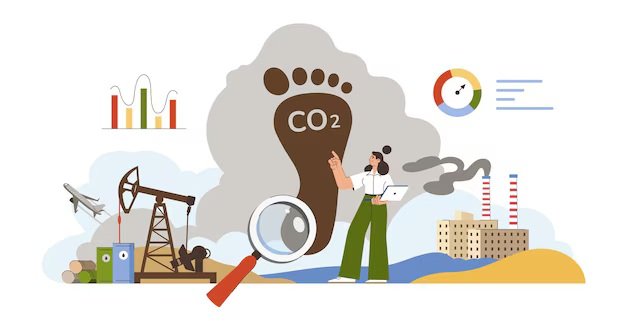ParkTok: How a Viral Trend Turned Attention to Park Funding
The videos landed in feeds like any viral clip: provocative music, quick cuts, a wink or laugh — and then a sweep of valley, geyser, cliff or old-growth forest that stops you. Creators who call their work “ParkTok” pair attention-grabbing clips (some leaning on what social media calls “thirst traps”) with plain-language facts about park staffing, closures and budget proposals. The result is odd, irresistible and effective: hundreds of thousands of viewers who might otherwise scroll past a policy story are now seeing the phrase “save our parks” paired with a beautiful landscape. One Yellowstone-themed ParkTok account grew to more than one million followers and millions of likes in a matter of months.
ParkTok did not invent concern for public lands, but it made that concern visible in a new way. Creators such as Kim Tanner, who runs popular unofficial park accounts, have told reporters they aim to “hook” viewers first and then put facts in front of them — a deliberate choice to meet audiences where they already spend time. Some accounts remix footage (and sometimes the likenesses of entertainers) to draw attention; others stitch short interviews with rangers and park staff. The tactic is blunt: get eyeballs, then give the call to action. Coverage in outlets from SFGATE to The Daily Beast has described how these videos, even when playful or risqué, are being repurposed into political pressure and donations.

The Crisis ParkTok is Answering: Money, Staff and Fast-Growing Demand
The social media fad wouldn’t be strange or persuasive if there weren’t a sharp policy story underneath. This year, the administration’s budget blueprint proposed cuts of more than $1 billion to the National Park Service — including a dramatic reduction to operations funding that would slash key services and hiring capacity. According to the National Parks Conservation Association, that plan would eliminate roughly $900 million from park operations and represents the largest such proposal in the Service’s history.
Those cuts cascade into everyday problems visitors notice: closed visitor centres, delayed trail maintenance, fewer patrols and seasonal employees unable to start work on schedule. Park staff across regions report chronic shortages; in parts of Colorado’s public lands system this summer, officials said dozens of full-time positions are gone and hiring for seasonal roles has fallen behind, leaving managers short-handed during peak visitation. According to Axios, some forest supervisors reported loss of roughly 29% of full-time staff and hundreds of vacant seasonal slots — a strain that shows in bathrooms, trail upkeep and wildfire readiness.
National advocacy groups warn the cuts could lead to site-by-site closures. A prominent NPCA analysis concluded that proposals of this magnitude could effectively shutter hundreds of park units — an impact that would ripple through local economies that depend on outdoor tourism. A report by the NPCA in 2025 found that at least 350 park sites could be at risk under extreme budget scenarios.
Real People, Real Jobs and How Viral Attention Changed the Conversation
The abstract numbers hide human stories. This spring and summer, seasonal hires in some places went unpaid while park offices scrambled to sort hiring paperwork and funding authorisations. Workers who took short-term jobs to staff visitor centres and trail crews told NPR they worked without pay for weeks before their paperwork was corrected — many saying they felt taken advantage of and anxious about lost income. According to NPR, seasonal staff at Yosemite reported working as long as six weeks without pay amid the hiring confusion.
Those on the front lines — rangers, ecologists, search-and-rescue volunteers — describe a day-to-day reality of covering responsibilities outside their core roles. A former Yosemite search-and-rescue staffer told reporters the pressure is real and that small teams are being stretched to respond to life-or-death calls while also doing visitor education and infrastructure work. According to SFGATE, search-and-rescue personnel and seasonal staff are being asked to fill multiple roles at once as budgets tighten.
ParkTok creators and some park advocates say that social attention changed the tenor of the public conversation. The viral clips drove traffic to fundraising pages and to established organisations like the National Park Foundation and NPCA, and generated public comment on appropriations hearings. Creators like Kim Tanner told reporters their method is tactical: get people to care first, then give them a way to act. According to AS USA, Tanner said the format “pulls people in” and can subliminally educate viewers about what’s at stake.
Table: Quick stats at a glance — policy and reach (for context)
| Figure | What it means |
|---|---|
| $900 million cut | Proposed reduction to park operations funding in the 2026 budget blueprint. |
| 350 park sites | Estimate of park units that could be shuttered under extreme cuts. |
| 1,000s of staff reductions | Large overall staff declines, with many seasonal roles unfilled this year. |
| 1,000,000+ followers | Viral ParkTok Yellowstone-themed account’s follower count (rapid growth in months). |
| Multiple weeks unpaid | Reports of seasonal workers at Yosemite working without pay for weeks. |

What Works, What’s at Risk, and How Readers Can Act
ParkTok’s tactics reveal something plain about modern advocacy: short-form, emotionally vivid content can expand an issue’s audience quickly. The trend’s success rests on three mechanics that apply to other causes too — attention, story and a clear ask. Attention: a clever hook makes someone stop scrolling. Story: a human face or a neat visual keeps interest. Ask: a link, a donation button, a petition or a local town-hall calendar invites action. Several creators have coordinated posts ahead of key votes or budget hearings, and advocates say that coordinated visibility contributed to lawmakers placing protections and additional funding for parks onto committee agendas. According to NPCA, Congressional committees have moved bipartisan bills that aim to protect park staffing and operations following intense public pressure this year.
But social media advocacy has limits and risks. A viral clip can bring sympathetic attention, but cannot replace stable public funding, nor can it substitute for the professional work of trained rangers, biologists and maintenance crews. Misinformation and impersonation are hazards too; parks have had to clarify that viral accounts are not official channels, and some creators have used others’ images or clips without permission. That confusion can fracture public trust and complicate coordination during emergencies. The National Park Service has repeatedly reminded viewers to consult official park pages for safety notices and closures. According to Outside, parks themselves are not affiliated with many viral ParkTok accounts and have cautioned viewers accordingly.
If you care about saving parks, here are practical, proven steps you can take today: visit official park websites before you go and follow verified park social accounts for safety notices; donate to reputable organizations that support park operations (for example, the National Park Foundation or the NPCA); show up to local town-hall meetings or submit comments to your representatives during budget debates; support philanthropic efforts that fund hiring of seasonal rangers and maintenance crews; and use your own social channels to amplify verified information from trusted organizations. When sharing ParkTok or other viral content, check the source and, if a creator links to an action page, confirm that donations go to a registered non-profit or to official park partners.
Learn More: Hot Potting in Yellowstone
Conclusion
ParkTok is not a policy fix, but it changed the story: it made thousands of people care about parks who otherwise wouldn’t have clicked on a budget headline. The movement illustrates the modern arc of civic attention — one that begins with a short video and, at its best, ends in participation: calling an elected official, showing up to a rally, or donating to keep a ranger on the job. The question now is whether that moment of attention becomes sustained public action that makes up for the cuts at the heart of the controversy. Lawmakers, park managers and the public will decide whether a viral moment turns into a lasting safety net for the places millions call America’s natural treasures.







